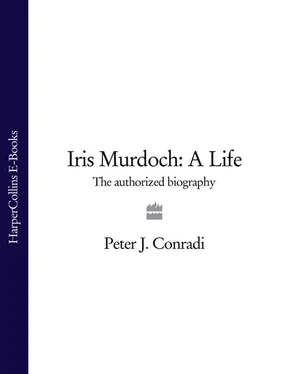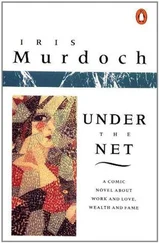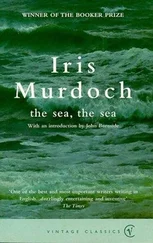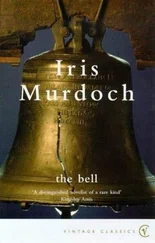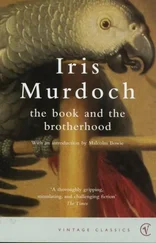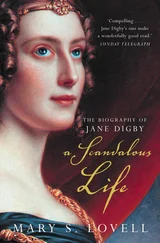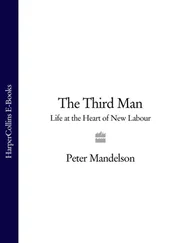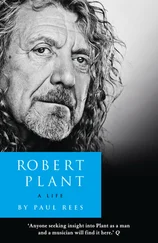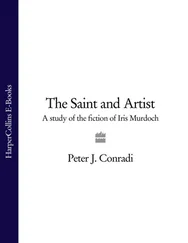A major artist is a contested site, and, rather as the Queen has an official birthday, is bound to acquire official friends. Iris, instantly memorable, * also made each friend feel uniquely befriended. Only the vainest believed that this was literally true, and she, who befriended so many, was known to few. This biography is a quest for the living flesh-and-blood creature hidden beneath the personae in which many invested: the blue-stocking, the icon, the mentor and John the Baptist to other writers who, that work satisfactorily fulfilled, could vacate the scene to others uncommemorated. The Indian writer Ved Mehta optimistically believed she had ‘no enemies’. She was sometimes portrayed as a bourgeois grandee living an unworldly detached intellectual life, a stained-glass ‘Abbess of North Oxford’ cut off from reality, inventing a fantastical alternative world for compensation. ‘Real life is so much odder than any book,’ she wrote to Philippa Foot: 5her life was as exciting and improbable as her fiction. Much in her fiction thought to be ‘romance’ turned out to be realism. Her novels are not just stylised comedies of manners with artificial complications, but reflect lived experience, albeit wonderfully transmuted. If, like Yeats, she was ‘silly, like us’, her gifts, as Auden put it, survived it all.
She has been claimed by many: as an example, magus or mentor both to younger writers and to seekers; by Stirling University, where the Scottish Assembly voted the astonishing figure of £500,000 to help fund an Alzheimer’s Centre in her name; by St Anne’s College, Oxford, where a graduate scholarship may be called after her. She is to be acted by Dame Judi Dench and Kate Winslet in a film. Oxford University plans to raise two and a half million pounds for a chair in geriatric psychiatry in her name. There will surely be further memoirs. One task of the biographer must be to give the artist’s ‘mana’, power or prestige, back to herself. Another, to return the reader to her best work
The critic P.N. Furbank in Encounter once gallantly blamed his disappointment with The Italian Girl on the unrealities of Oxford life, on which he thought the book based. The Iris who wrote to Raymond Queneau of her love of ‘this precious enclosed community … with all its pedantry & its intellectual jokes’, 6who lived at number 43 Park Town in North Oxford in 1940, at number 16 in 1948, and at number 58 in 1950, is not the whole story. This biography is a quest for other Irises: the Irishwoman; the Communist-bohemian; the Treasury civil servant; the worker in Austrian refugee camps; the Anglo-Catholic retreatant; the Royal College of Art lecturer; the lifelong devotee of friendship conducted at a distance and by letter – what Nietzsche in The Gay Science called ‘star friendship'; the Buddhist-Christian mystic. The recent past is too close for objectivity, and this book might have been entitled ‘Young Iris’. The period 1919 to 1956 is least known, and least discussed in John Bayley’s memoirs of Iris. In 1997 no fewer than three Badminton schoolmistresses, who knew Iris from 1932, were still with us. That period was soonest likely to disappear from view. I would focus on the so-called formative years: the time before the creative confusion of youth gave way to a greater stability.
How extraordinary her life proved to be: nothing was as I expected, yet it was real as well as fantastical. She played two opposite and heroic parts: a Colette de nos jours, hard-headed, hard-working, ardent and sometimes humiliated, presiding over her own emotional life and so a role-model for other women; 7the second other-centred to the degree that she lost much sense, in the service of her ‘conjecture’ about the Good, of who she was.
How does one write about someone who thought she had ‘no memory, no continuity, no identity'? Periodically rediscovering her own journals, Iris kept surprising herself: ‘What an Ass I was!’ Yet, as a novelist, she had digested and reworked her experience: it might be that she had finished with and shed the earlier persona. She certainly agreed with T.S. Eliot that ‘the more perfect the artist, the more completely separate in him will be the man who suffers and the mind which creates.’ Suffering interested her.
I believed, as Dorothy Thompson – sister-in-law to Frank Thompson, who loved Iris during the war – put it, that ‘The articulate members of a generation speak for many others besides themselves,’ 8and planned a book in two parts, one leading up to Iris’s marriage in 1956, recording her imaginative indebtedness to her Oxford generation, the second concentrating on her work. After I had drafted seven chapters, however, Tom Hicks made Iris’s letters to his father David available to me; these were soon purchased by the Bodleian Library, and considerably complicated my view. A three-part structure now seemed apt. Iris saw human life as a pilgrimage away from fantasy and towards reality. Her own life fitted this template: Innocence/Innocence Lost/Innocence Regained. She honoured the irreducibility of her friends and I wished in turn to explore, but not explain away, her mystery. The book is also an interlinked series of short stories, each partly cultural history, recording what it was like to be at Iris’s schools in 1925 and 1932, at Oxford in 1938, at the Treasury during the war, in the DP camps just afterwards, among the German-Jewish émigrés of the 1950s, at the RCA in the 1960s. This necessitated deciding what to leave out. As a non-philosopher, I had to leave authoritative ‘placing’ of her thought to others. It became apparent that those looking for in-depth literary criticism would have to find it in my earlier book The Saint and the Artist, itself in part intellectual biography, whose third edition comes out simultaneously with this biography. There was little space to describe foreign trips (seven in one year alone). Many who knew her loved her and wanted to claim her for their own. Despite this gift of becoming instantly important to others and the many and great debts I owe to later friends, there was little Space to explore recent friendships, which in contrast with those negotiated before the age of thirty are ‘apt to be burdened with reservations, constraints, inhibitions’. 9
Michael (M.R.D.) Foot wrote after Iris died: ‘Her light was once marvellously bright; and you are lucky to bathe in so much of it.’ I felt that luck. Closeness to one’s subject is simultaneously a strength and a liability, and I wanted to write the first biography of Iris, but not the last: to start the job of setting her work in the context of the cultural/intellectual life of the mid-twentieth century, of the generation who struggled to come to terms philosophically and emotionally and artistically with Stalin and Hitler, with existentialism, and with the slow collapse of organised religion. She left behind edited journals (1939–1996) which constituted an invaluable resource, carrying her unique ‘voice’.
‘How can one describe another human being justly?’ the narrator of The Black Prince asks. Iris was, as many of her friends put it, more passionate for truth (generally the faintest of all human passions, A.E. Housman observed) than anyone they had known. Trying to tell the truth in the right way was challenging, and if this is anywhere achieved, I owe much to the hundreds who helped: to the generosity of the British Academy for their 1998 award of a small grant, to Magdalen College, Oxford, where I was happily Visiting Fellow in Hilary term 1999, and to Professor John Sutherland for inviting me to be Honorary Research Fellow at University College, London. Chapter 1 plunders, with their permission, the scrupulous genealogical researches both of Mr Arthur Green and of Iris’s second cousin Canon Crawford. Professor Roy Foster kindly vetted what I had written on Iris’s ‘Irishness’, and Chapters 1 and 16 benefited greatly from his kindly and authoritative guidance. Professor Miriam Allott read Chapter 2; John Corsellis Chapters 8 and 9; Marija Jancar Chapter 9; Mrs Anne Robson Chapter 11: all made helpful suggestions. Professor Dorothy Thompson generously allowed access to the closed collection of Thompson papers, and she and Frank Thompson’s biographer Simon Kusseff helped with limitless patience; Simon read Chapters 4 to 7, and fine-tuned many points therein. Michael Holroyd commented on a number of passages. Professor Dennis Nineham shared his theological expertise. I’m deeply indebted to very many librarians and archivists: among them Christopher Bailey at Viking New York; Eugene Rae at the Royal College of Art; Pauline Adams at Somerville College, Oxford; Jane Read at Froebel College; Diane Elderton, Librarian of Ibstock Place School; Dr David Smith at St Anne’s College; the British Library; all the staff of the Modern Papers room at the Bodleian Library; and Michael Bott at the University of Reading Library, where Dame Iris’s Chatto archives live. My gratitude to Alison Samuel of Chatto for facilitating access, and to Daphne Turner for having researched that huge archive, amongst much else. Although Fletcher and Bove’s Iris Murdoch: A Primary and Secondary Annotated Bibliography (London and New York, 1995, new edition forthcoming) shows that there are many of her letters in public collections in libraries scattered worldwide, I have relied much more heavily (except where indicated) on privately held letter-runs, and am deeply grateful that so many were made available to me.
Читать дальше
